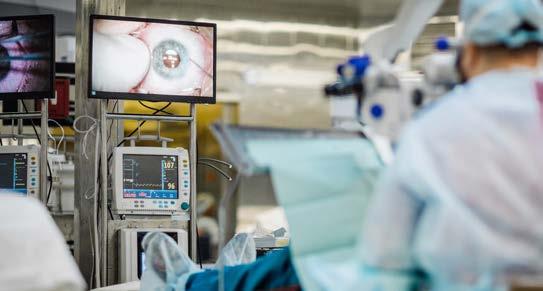
1 minute read
Traditional Vs. Laser-Assisted Cataract Surgery
Vision loss due to cataracts is reversible. In the early stages of cataracts, your ophthalmologist or optometrist will monitor the progression, updating your prescription for glasses or contacts along the way. When your lenses become so clouded that updates to your prescription no longer help, surgery is the only treatment option. During cataract surgery, the cloudy lens is removed and an artificial lens, called an intraocular lens (IOL), is implanted. There are two methods of doing this. You can opt for traditional cataract surgery or laser-assisted cataract surgery.
Traditional Cataract Surgery
Advertisement

Traditional cataract surgery is performed manually with a surgical blade. An ophthalmologist makes two small incisions in your cornea. The eye is filled with a viscous material that helps to maintain the natural volume of the eye. The capsule, the bag that contains your cataract, is opened. An ultrasound handpiece is used to break up the cataract. The handpiece has a vacuum that aspirates the pieces of your cataract. An intraocular lens is inserted in the same capsule that contained your cataract.
Traditional cataract surgery is one of the most commonly performed surgical procedures in the world. It is universally recognized as being both safe and effective.
Laser-Assisted Cataract Surgery

In laser-assisted cataract surgery, the laser is used to adjust corneal astigmatism, create the circular opening in the capsule, and soften the cataract. The laser can also create the corneal cataract incisions. Removal of the cataract is still done by the ophthalmologist.
What are the Differences?
Laser-assisted surgery is more precise. This allows eye surgeons to treat your corneal astigmatism, which allows for more spectacle independence. Because a laser can be used to soften the cataract, less ultrasound energy is needed to break it up, which decreases the risk of swelling of the cornea. Laser-assisted surgery also provides for a safer surgery in patients who have weak zonules, which are the support structures for the cataract.
Watch This Video to Learn About the CATALYS Precision Laser System




